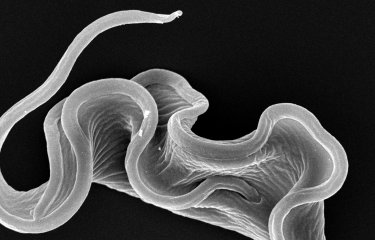Scientists from the team led by Jean-Paul Latgé, Director of the Aspergillus Unit at the Institut Pasteur, have discovered a new communication pathway between two pathogens that colonize the same ecological niche and are both involved in acute pulmonary pathologies, particularly in patients with cystic fibrosis (the most common genetic disease in Europe).
The scientists demonstrated that the Aspergillus fumigatus fungus was able to feed on volatile organic compounds released by the Pseudomonas aeruginosa bacterium. The volatile organic compound produced by the bacteria which was mainly responsible for stimulating fungal growth was identified as dimethyl sulfide. By ingesting this compound, A. fumigatus, which relies on sulfur for its vegetative growth, can compensate for the lack of free sulfur in the pulmonary environment.
These results suggest that the volatile sulfur produced and released following infection by P. aeruginosa could create favorable conditions for the establishment of the fungal pathogen in the lung. The findings of the Aspergillus Unit show that remote communication by intermediate volatiles is a new parameter that should be taken into account when analyzing the complex process of infection and the role of the microbiome in its development.
Source
Volatile Compounds Emitted by Pseudomonas aeruginosa Stimulate Growth of the Fungal Pathogen Aspergillus fumigatus, mBio, march 15, 2016
Benoit Briard (1), Christoph Heddergott (1), Jean-Paul Latgé (1)
(1) Aspergillus Unit, Institut Pasteur, Paris, France
Mis à jour le 07/04/2016





